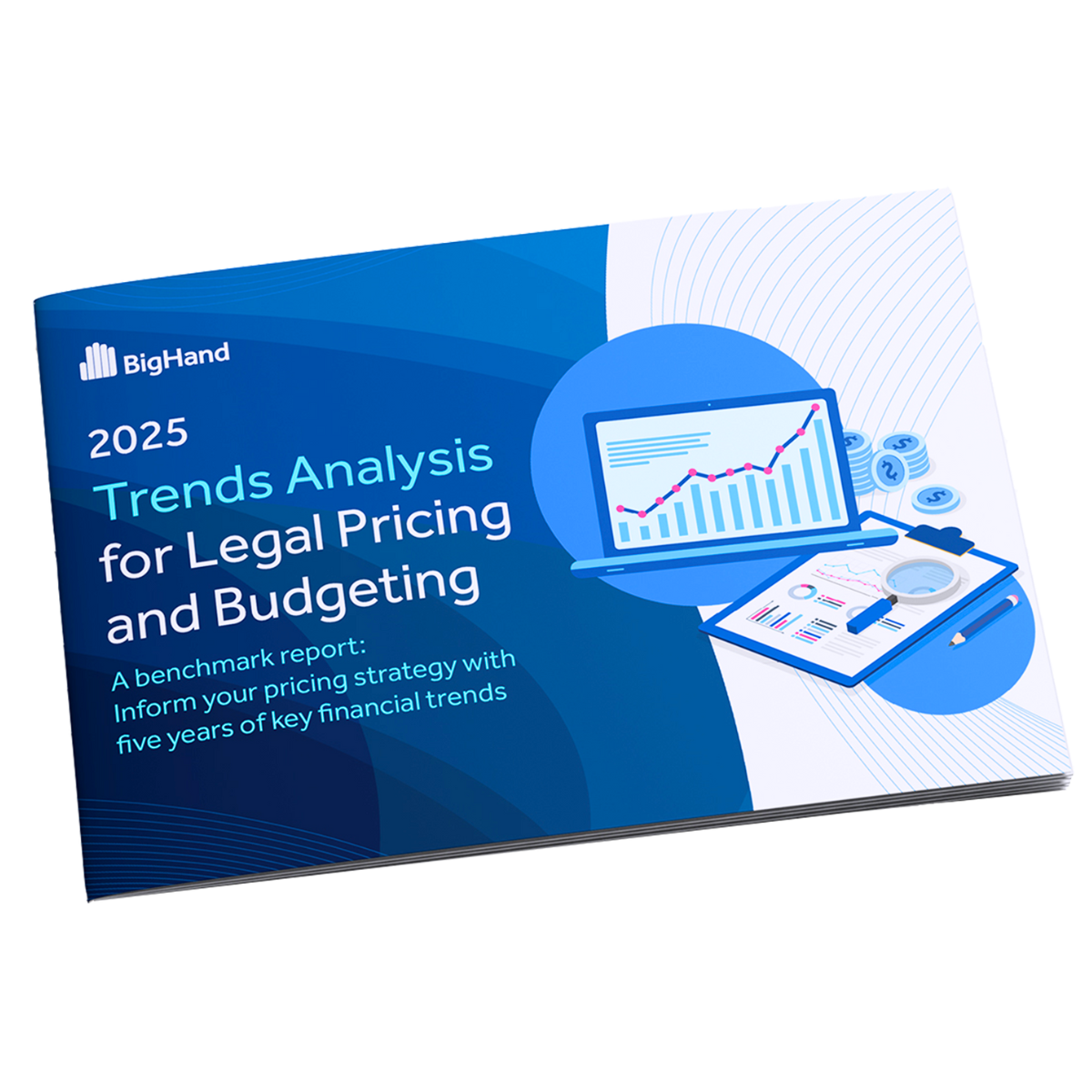Every single law firm surveyed in BigHand’s 2025 Legal Pricing and Budgeting Trends Analysis reported that technology and AI have already impacted their pricing strategies. It’s a figure that signals a fundamental change in how legal services are being delivered, valued, and billed.
However, despite this universal acknowledgment, adoption of specific pricing models to reflect AI-driven efficiencies hovers around one-third for each model. This lack of consensus is hardly surprising. With AI still relatively novel and the legal sector steeped in tradition, transformation takes time. But that 100% statistic is hard to ignore; the future isn’t coming, it’s already here.
For forward-thinking firms, an industry in flux isn’t a roadblock. It’s an opportunity. Those that can articulate a clear and consistent framework for how AI is integrated into pricing and client conversations will have the competitive edge.
Let’s dig deeper into how AI is reshaping legal pricing, what this means for the market, and how firms can extract tangible value from it right now.
Seven Ways AI is Reshaping Legal Pricing
According to BigHand’s latest research, AI is transforming the economics of legal work in seven key ways:
- Faster completion of legal work
- Increased matter throughput or the ability to handle more matters
- Reduction in billable hours for certain tasks
- Improved profitability per matter
- Streamlined internal workflows or collaboration
- Reduced reliance on manual or repetitive tasks
- Changes to pricing structures for AI-augmented work
Together, these shifts paint a picture of a market in motion. As firms embrace AI to deliver work more efficiently, they face a new challenge: how to capture and communicate the value of these gains.
Value Beyond Efficiency
From my perspective, based on daily conversations with law firms, the next move firms make around AI and technology could define their competitive edge for years to come.
Efficiency gains such as “reduced reliance on manual or repetitive tasks,” “faster completion of legal work,” and “streamlined internal workflows” are fast becoming baseline expectations. The real differentiator will be how firms leverage those efficiencies to power a shift toward value-based pricing.
As Léo Murgel, Senior Vice President at Salesforce, notes in BigHand’s report:
“The pervasive adoption of AI in legal work generation has unlocked unprecedented efficiencies, creating a significant opportunity for firms to move beyond hourly billing. It’s time for a widespread shift to outcome-based pricing, which directly reflects the value and results delivered to clients, rather than the time spent.”
We’re seeing firms invest in AI and, naturally, they’ll want a return on that investment. With AI reducing billable hours in many cases, firms don't want to see revenue drop in tandem. This is where Alternative Fee Arrangements (AFAs) come in. In addition to firm benefits, clients can often see the benefit from AFAs as well. Client expectations continue to evolve as they seek cost predictability, transparency, and proof of value. AFAs provide that agility; however, progress remains cautious.
- AFA usage is concentrated in the 11–40% moderate-use range
- Very few firms use AFAs in more than 40% of matters
- Usage drops sharply after 30%
Firms are trying to balance client satisfaction with risk management, but hesitation carries its own risk: margin erosion and lost mandates to more agile competitors. Those that get ahead of the AFA curve by designing, pricing, and delivering models that create genuine win-wins will thrive.
The goal is not to offer the lowest rate; it is to offer smarter pricing that supports sustainable profitability.
The Value Gap and the Road Ahead
While generative AI is already reshaping matter delivery, many firms are still unsure how to capture and communicate its value to clients. The data highlights this gap:
- 30% of respondents said AI or tech integration was a strategic focus for their pricing and finance functions over the coming year
- Only 34% have formally updated their pricing models to reflect AI-driven gains
- Just 32% include AI or tech usage in client pricing breakdowns
- Fewer than one in five firms (19%) intend to provide transparency about how tasks are divided between humans and AI
By not fully capturing and articulating AI-driven value, firms risk undervaluing their work and eroding pricing credibility.
The message is simple but urgent: AI is already transforming how legal work is done and valued. The question is no longer if it will reshape your pricing strategy, but how quickly you can adapt.
The firms that succeed will be those that turn intelligence into advantage, reframing their pricing models around value, transparency, and performance to meet the demands of a new era of legal service delivery.








